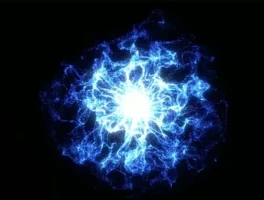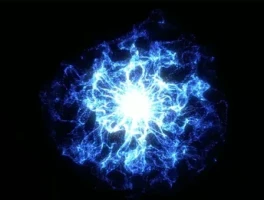The Great Plasma Problem: Why Our Physical World Can't Keep Up with Our Ambitions
There’s a fundamental disconnect between our ambitions and our materials. We see this pattern emerge in quarterly reports and product recalls with predictable regularity. A company promises a certain performance metric, the device ships, and reality intervenes.
Take the recent recall—or "correction," as they call it—for 3M's Ranger Blood/Fluid Warming System. The device was labeled to warm fluids, including critical blood plasma, at a flow rate of 500 mL/min. The reality, discovered after the fact, was that the heater couldn't keep up. The actual sustainable flow rate was significantly lower: down to 333 mL/min with room-temperature fluid, and a mere 167 mL/min with refrigerated fluid (like blood bags). That’s a performance discrepancy of 33% to 67%. For a medical device where incorrect temperatures can lead to hypothermia, that isn't a rounding error; it’s a critical failure of the physical system to meet the specified demand.
This isn't just a story about one device. It’s a microcosm of a much larger challenge we face with one of the universe's most fundamental and volatile states of matter. Whether it's the plasma in blood or the superheated fuel of a star, we are consistently hitting the physical limits of our ability to control it. The data suggests we’re reaching a point where better hardware alone is no longer the answer.
The Autopsy of a Star Machine
For forty years, the Joint European Torus (JET) was the world’s leading fusion research facility. It was a monumental piece of engineering, a tokamak designed to wrestle hydrogen isotopes into a plasma hot enough to fuse. In December 2023, after breaking its own energy record, it was shut down for good. Now, engineers are performing what can only be described as a long, meticulous autopsy.
Using remote robotics, they’ve begun removing 66 sample tiles from the reactor's inner wall. These components, made of materials like beryllium and tungsten, are the equivalent of a boxer's scar tissue. They bear the marks of four decades of bombardment by plasma hotter than the sun's core. The goal is to read those scars—to analyze the physical, chemical, and radiological damage—to understand what 40 years of containing a miniature star actually does to a machine.
And this is the part of the report that I find genuinely telling. Towards the end of JET's life, the scientists didn't just let it run; they intentionally damaged it. They created multiple plasma disruptions, slammed electromagnetic forces into the walls, and aimed electrons at the inner lining to cause surface melting. They pushed the machine past its breaking point on purpose. Why? Because after decades of operation, the most valuable data left to extract came from its failure.

This strikes me as a profound admission. It signals that we're at the edge of what a purely physical, iterative approach can teach us. We can build a machine, run it, see where it breaks, and then try to build a slightly stronger one. But if your goal is a commercial fusion reactor that runs 24/7 without interruption, you can’t exactly schedule a catastrophic failure every few years for research purposes. What happens when you can no longer afford to learn from your mistakes in the physical world?
A Ghost in the Machine
The most compelling answer, it seems, isn't coming from a materials science lab. It’s coming from an algorithm. Researchers at Princeton have developed an AI tool called Diag2Diag that fundamentally changes the game. It addresses the core problem that plagues plasma physics: you can never get a complete picture of what’s happening inside a tokamak in real-time.
Physical sensors have limitations. Some measure temperature, others measure density. Some are fast, others are slow. Crucially, many can't properly measure the most important and unstable part of the plasma—the edge, or "pedestal." Instabilities in this region, known as edge-localized modes (ELMs), can erupt and release massive bursts of energy, potentially damaging the reactor wall. It’s like trying to drive a race car by only looking at the dashboard once every ten seconds. You’re missing the most critical data when you need it most.
Diag2Diag works like a translator. It takes the incomplete data from all the existing sensors and generates a synthetic, high-resolution data stream for the sensors that are too slow or can't see the right spots. It’s effectively giving physicists a super-sensor without spending a dime on new hardware. The AI was trained on data from the DIII-D National Fusion Facility and can now reconstruct missing information with startling accuracy—to be more exact, it provides details that physicists need to keep the plasma stable but which no single diagnostic tool can capture fast enough.
This is more than just a clever workaround. The AI’s synthetic data provided new evidence supporting a leading theory on how to suppress those damaging ELMs, something direct observation couldn't confirm. It’s a ghost in the machine, seeing the patterns that our physical eyes miss. This breakthrough led one science outlet to declare that Princeton’s Clever AI Just Solved One of Fusion Power’s Biggest Problems.
The implications are purely economic. Future fusion reactors need to be compact, reliable, and cost-effective. Diag2Diag allows for a design with far fewer, less complex diagnostic tools. Fewer components mean a smaller footprint, less maintenance, and fewer points of failure. The path to stable fusion energy, it turns out, might be paved with code, not just exotic alloys. It’s a profound shift from a hardware problem to a software solution.
The Asymmetry of Information
The parallel is unavoidable. The 3M plasma warmer failed because its physical components couldn't transfer heat fast enough to meet the demand—a hardware limitation. The JET tokamak was pushed to destruction because its operators needed to understand the absolute limits of its physical hardware. Both scenarios represent a dead end, a point of diminishing returns. The Princeton AI offers a different path. It accepts the physical limitations of our sensors and uses information theory to see through them. It’s a solution that acknowledges reality instead of trying to brute-force it. The most complex physical challenge on the planet—controlling a star—may ultimately be solved not by a stronger wall, but by a smarter model.


